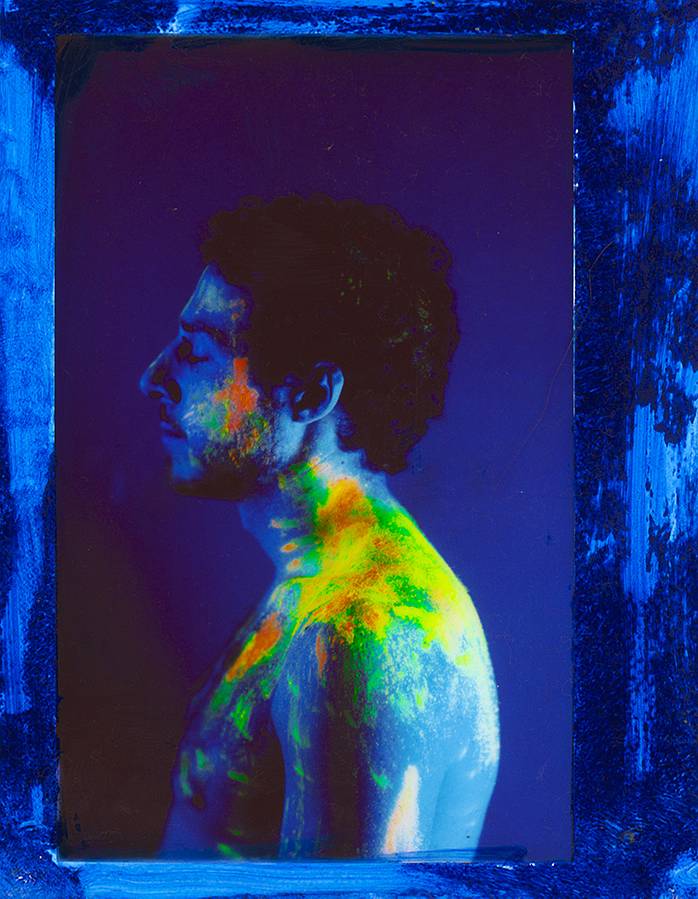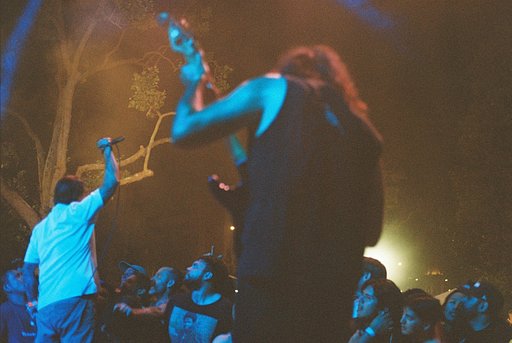Visual Research with Magda Kuca and the LomoGraflok 4x5 Instant Back
10 Share TweetLondon-based visual artist Magda Kuca explores subjects such as identity and memory through historic photography processes such as wet collodion, cyanotype and other obsolete methods. She has collaborated with organisations such as the British Museum, University of Arts London, and Royal Botanic Gardens-Kew and continues to create work that bridges the gap between analogue photography and art whilst celebrating the serendipitous nature of this practice. We sent Magda the LomoGraflok 4x5 Instant Back to test out and she talked to us about her work and the inspiration behind these photos.

Hi Magda, please tell us a bit about yourself.
I am a visual artist, photographer and educator working from my studio in West London. My work is often influenced by the supernatural and folklore. Utilising large format photography and historical photographic techniques such as wet collodion, gum bichromate and platinum print, I explore narratives around craft and materiality. As an educator, I teach from my London studio, focusing on early image making methods through hands-on workshops and lectures working with other artists and creators, brands, galleries and museums in the UK and worldwide.

Photography for me is light and silver – it's tangible, has a sound and smell to it. I started working with the wet collodion process in 2015 and haven't looked back since. From historic to experimental processes such as electrophotography, I've immersed myself within the world of photographic 'alchemy'.
Photography in its various forms has been my passion since I can remember (I can still recall reading Susan Sontag's 'On Photography' during biology classes in high school!) and today it remains the extension of myself – subjects that I work with, that concern me – memory, roots, identity and relationships – come from my own personal experience and I explore those through portraiture and storytelling.
How did you get on shooting with the LomoGraflok and what was your setup?
My camera didn't have a graflok back but that didn't stop me from adapting the back so I started troubleshooting and eventually got my setup up and running. I very much enjoy the performative nature of photography. For these shoots, with fuji instax being 800 ISO, I've used very low light levels, continuous lighting, and long exposure times, giving me 'space', a sense of mystery, reflection and rethinking time and its duration. I was recalling the first exposures of nearly 8 hours by Niepce and his View from the Window at Le Gras, time during which a painting could have been painted of the same view. That never ending relationship between photography and painting was there in the back of my head as an inspiration.
What was the inspiration behind these photos?
A number of years back when I was still living in Poland I remember seeing an exhibition 'Instant Curiosities' curated by one of my then teachers Witold Kanicki exploring histories, past and present, of instant photography in its many forms. For Polish photographers, instant materials were often financially unobtainable. I remember the stories on how different manufacturers, past and present, would send out materials to photographers for testing and that would be the only time they would get to use them.
When I was approached to test the LomoGraflok Instant Back, I went back in my memories to those shots and to the ideas of the past. There was nothing quite like that in the history of color photography. I think the idea of the object, one and unique, that existed in a particular time and space, is very close to my practice with wet collodion plates. As Fuji Instax came along, materials are now much more accessible and so many of us can experience the joys of instant photography, bringing that material and tangible element, I believe there is a huge value that it brings to a highly digitised world.
I've tried to use the LomoGraflok to give viewers the insight into how my creative process works. Being a contemporary photographer using historic processes I often feed off archival materials – archives and objects of the past are where I find my inspiration. I think of instax material as being a bridge between past and present. so I've named it "visual research" through the LomoGraflok.
Working with photography, especially in more professional settings can often put pressure on achieving certain looks or results. Longing for perfection can sometimes obscure the creative process. That is especially true working with large format photography where every sheet of film matters and each glass plate is precious. I've played around with the materiality of the instax, experimented with different mediums, let myself fail, enjoy the process, and looked to enrich my experience as a visual artist and the ways in which the LomoGraflok can support that kind of research.
Any tips on shooting with the LomoGraflok Instant Back?
Being able to control the exposure and choose the lens is a huge advantage of this back. Use it, but equally, welcome the unpredictability that comes with the process.
What's coming up for you in 2023?
I've just moved into a new studio in West London, Kensington and I am very excited about it! I am lucky enough to have a garden which, for a wet collodion and historic processes oriented photographer, is a real treat. As I am gravitating towards a professional career in fine art photography, my focus this year is to become more creatively independent while welcoming exciting collaborations with other artists and institutions. I am also in the beginning stages of working on a new book but it's too early to give up more details!
To see more of Magda's work, do visit her website or Instagram page.
2023-02-16 #gear #people #experimental #large-format #instant-photography #lomograflok-4x5-instant-back #magda-kuca
























No Comments